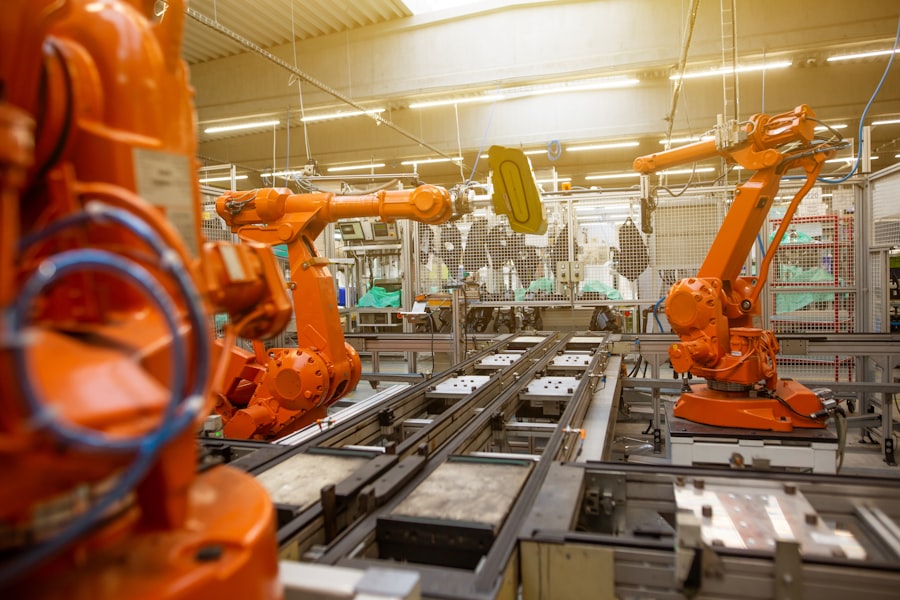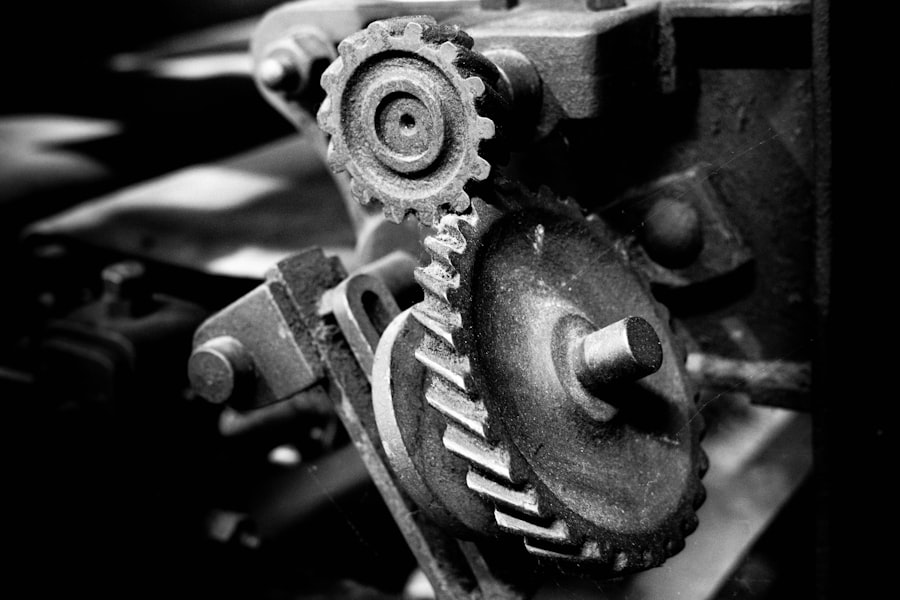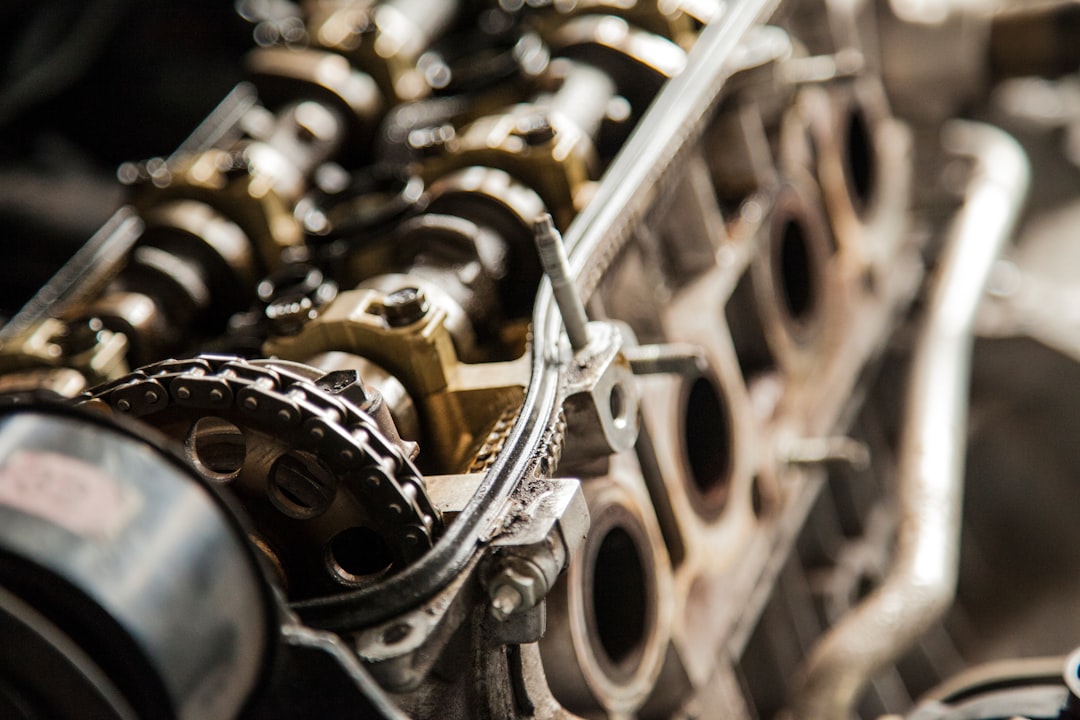Self-running machines, often referred to as autonomous or self-operating systems, represent a significant leap in technological advancement. These machines are designed to perform tasks without the need for human intervention, relying on sophisticated algorithms, sensors, and artificial intelligence to navigate their environments and execute functions.
The allure of self-running machines lies not only in their ability to operate independently but also in their potential to transform everyday life. From manufacturing robots that assemble products on assembly lines to drones that deliver packages, these machines are becoming increasingly prevalent. As society moves toward greater automation, understanding the intricacies of self-running machines becomes essential for grasping their implications on the economy, labor markets, and even ethical considerations.
Key Takeaways
- Self-running machines are autonomous devices that can operate without human intervention.
- The concept of self-running machines dates back to ancient times, with the first known self-operating machine being the water clock invented by the ancient Greeks.
- Self-running machines work through a combination of sensors, actuators, and control systems that enable them to perceive and respond to their environment.
- Self-running machines have a wide range of applications, from manufacturing and logistics to agriculture and healthcare.
- The advantages of self-running machines include increased efficiency, reduced labor costs, and improved safety in hazardous environments.
History of Self-Running Machines
The journey of self-running machines can be traced back to ancient times when inventors sought to create devices that could operate autonomously. Early examples include simple water clocks and mechanical automata that mimicked human actions. However, it was not until the Industrial Revolution that the concept began to take a more defined shape.
The introduction of steam power and later electricity paved the way for more complex machines capable of performing specific tasks with minimal human oversight. In the 20th century, the development of computers and digital technology marked a turning point in the evolution of self-running machines. The advent of programmable logic controllers (PLCs) in manufacturing allowed for greater automation, leading to the creation of robots that could perform repetitive tasks with precision.
As technology advanced, so did the capabilities of these machines, culminating in the emergence of artificial intelligence in the late 20th and early 21st centuries. This integration of AI has enabled self-running machines to learn from their environments and adapt their behaviors, further enhancing their autonomy.
How Self-Running Machines Work

Self-running machines operate through a combination of hardware and software components that work in tandem to achieve autonomy. At the core of these systems is a network of sensors that gather data about the machine’s surroundings. These sensors can include cameras, lidar, ultrasonic sensors, and GPS units, which provide real-time information about obstacles, terrain, and other critical factors necessary for navigation and task execution.
The data collected by these sensors is processed by sophisticated algorithms that utilize artificial intelligence and machine learning techniques. These algorithms analyze the information to make decisions about how the machine should respond to its environment. For instance, a self-driving car uses its sensors to detect other vehicles, pedestrians, and traffic signals, allowing it to navigate safely through complex urban landscapes.
The ability to learn from past experiences enables these machines to improve their performance over time, making them increasingly efficient and reliable.
Applications of Self-Running Machines
| Application | Metrics |
|---|---|
| Manufacturing | Production output, efficiency, downtime |
| Transportation | Distance traveled, fuel efficiency, maintenance costs |
| Agriculture | Crop yield, soil health, labor savings |
| Healthcare | Patient care efficiency, medication dispensing accuracy |
The applications of self-running machines are vast and varied, spanning numerous industries and sectors. In manufacturing, autonomous robots are employed for tasks such as assembly, welding, and quality control. These machines can operate around the clock without fatigue, significantly increasing production rates while reducing labor costs.
Additionally, they can work in hazardous environments where human workers might be at risk. In agriculture, self-running machines have revolutionized farming practices through the use of autonomous tractors and drones. These machines can plant seeds, monitor crop health, and even harvest produce with minimal human oversight.
This not only enhances efficiency but also allows farmers to optimize resource use and reduce environmental impact. Furthermore, in logistics and transportation, self-driving vehicles and delivery drones are beginning to reshape how goods are transported, promising faster delivery times and reduced operational costs.
Advantages of Self-Running Machines
The advantages of self-running machines are manifold and contribute significantly to their growing adoption across various sectors. One of the most notable benefits is increased efficiency. By operating continuously without breaks or downtime, these machines can complete tasks at a pace that far exceeds human capabilities.
This efficiency translates into higher productivity levels for businesses, allowing them to meet growing consumer demands more effectively. Moreover, self-running machines can enhance safety in workplaces where hazardous conditions exist. For instance, autonomous drones can inspect infrastructure such as bridges or power lines without putting human workers at risk.
Similarly, robots can handle dangerous materials or perform tasks in extreme environments where human presence would be unsafe. This shift not only protects workers but also reduces liability for companies.
Challenges and Limitations of Self-Running Machines

Despite their numerous advantages, self-running machines face several challenges and limitations that must be addressed for widespread adoption. One significant hurdle is the high initial cost associated with developing and implementing these technologies. Businesses may be hesitant to invest in autonomous systems due to the substantial financial commitment required for research, development, and integration into existing operations.
Additionally, there are technical challenges related to reliability and safety. Self-running machines must be able to operate flawlessly in unpredictable environments, which can be difficult given the complexity of real-world scenarios. For example, a self-driving car must navigate not only traffic but also weather conditions and road hazards.
Ensuring that these machines can make safe decisions in all situations is paramount but remains a significant challenge for developers.
Impact of Self-Running Machines on Industries
The impact of self-running machines on various industries is profound and far-reaching. In manufacturing, companies that adopt autonomous systems often experience a transformation in their operational processes. The integration of robotics leads to streamlined workflows, reduced production times, and improved product quality.
As a result, businesses can remain competitive in an increasingly globalized market. In sectors such as healthcare, self-running machines are beginning to play a crucial role in patient care and diagnostics. Robotic surgical systems allow for minimally invasive procedures with greater precision than traditional methods.
Additionally, AI-driven diagnostic tools can analyze medical data more quickly than human practitioners, leading to faster diagnoses and treatment plans. This shift not only enhances patient outcomes but also alleviates some of the burdens faced by healthcare professionals.
Future of Self-Running Machines
The future of self-running machines appears promising as advancements in technology continue to unfold. With ongoing developments in artificial intelligence and machine learning, these systems are expected to become even more sophisticated and capable of handling complex tasks autonomously. As algorithms improve and data processing speeds increase, self-running machines will likely achieve higher levels of autonomy across various applications.
Moreover, as society becomes more accustomed to automation, there may be a greater acceptance of self-running machines in everyday life. From smart homes equipped with autonomous appliances to fully automated factories operating without human intervention, the possibilities are vast. However, this future will also require careful consideration of regulatory frameworks to ensure safety and ethical standards are maintained.
Ethical and Social Implications of Self-Running Machines
The rise of self-running machines brings forth a host of ethical and social implications that warrant careful examination.
While these machines can enhance productivity and efficiency, they may also lead to significant job losses in certain sectors.
This shift raises questions about how society will adapt to changes in the labor market and what measures can be taken to support displaced workers. Additionally, there are ethical considerations surrounding decision-making processes within autonomous systems. For instance, in scenarios where a self-driving car must make split-second decisions during an accident situation, questions arise about how these decisions are programmed and who is held accountable for the outcomes.
As self-running machines become more integrated into daily life, addressing these ethical dilemmas will be crucial for fostering public trust.
Innovations and Developments in Self-Running Machine Technology
Innovations in self-running machine technology continue to emerge at a rapid pace, driven by advancements in artificial intelligence, robotics, and sensor technology. One notable development is the improvement of machine learning algorithms that enable these systems to learn from vast amounts of data more effectively. This capability allows self-running machines to adapt their behaviors based on real-world experiences, enhancing their performance over time.
Furthermore, advancements in sensor technology have led to more accurate perception systems for autonomous machines. High-resolution cameras, lidar systems, and advanced radar technologies provide detailed environmental data that enables better navigation and decision-making capabilities. As these innovations continue to evolve, they will further expand the potential applications for self-running machines across various industries.
The Potential of Self-Running Machines
In conclusion, self-running machines hold immense potential for transforming industries and reshaping everyday life. Their ability to operate autonomously offers significant advantages in terms of efficiency, safety, and productivity across various sectors. However, as society embraces this technological shift, it must also grapple with the challenges and ethical implications that accompany it.
As innovations continue to drive advancements in self-running machine technology, the future promises even greater integration into daily life and business operations. By addressing concerns related to job displacement and ethical decision-making processes while fostering an environment conducive to innovation, society can harness the full potential of self-running machines for a brighter future.
In the ever-evolving world of technology, the concept of a machine that runs itself is becoming increasingly feasible. This innovation is part of a broader trend towards automation and self-sustaining systems, which are designed to operate with minimal human intervention. For those interested in exploring this topic further, a related article can be found on the Hey Did You Know This website. This article delves into the intricacies of autonomous machines and their potential impact on various industries. To read more about this fascinating subject, visit the article by clicking on this link.
WATCH THIS! The Nuclear Doomsday Machine Russia Built That Runs Itself
FAQs
What is the machine that runs itself?
The machine that runs itself refers to a self-sustaining system that is capable of operating and maintaining itself without human intervention.
How does the machine that runs itself work?
The machine that runs itself typically utilizes advanced technologies such as artificial intelligence, machine learning, and automation to perform tasks, make decisions, and adapt to changes without human input.
What are the benefits of a machine that runs itself?
Some of the benefits of a machine that runs itself include increased efficiency, reduced operational costs, improved reliability, and the ability to handle complex tasks without human error.
What are some examples of machines that run themselves?
Examples of machines that run themselves include self-driving cars, autonomous drones, robotic assembly lines, and smart home systems that can regulate temperature, lighting, and security without human intervention.
What are the potential challenges or risks associated with machines that run themselves?
Challenges and risks associated with machines that run themselves may include concerns about job displacement, ethical considerations related to decision-making, and the potential for system malfunctions or errors.
